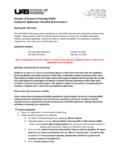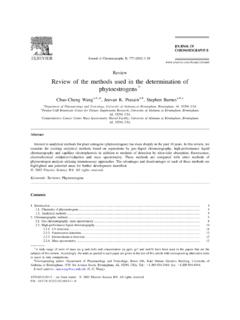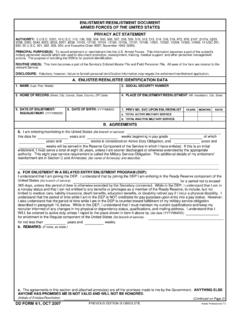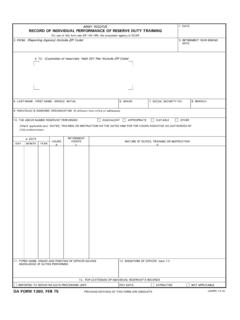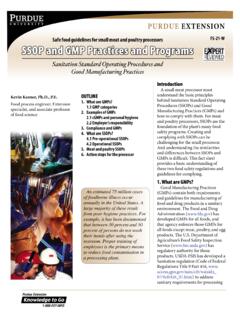Transcription of Safe Handling, Storage, and Disposal of Hydrofluoric Acid ...
1 HF Acid User s guide Page 1 Last Updated: 09/29/2016 safe Handling, Storage, and Disposal of Hydrofluoric Acid User s guide Presented by UAB Occupational Health and Safety (OH&S) HF Acid User s guide Page 2 Last Updated: 09/29/2016 Introduction Welcome to the safe Handling, Storage, and Disposal of Hydrofluoric Acid User s guide . This User s guide is presented by the UAB Department of Occupational Health and Safety (OH&S). Anyone that works with Hydrofluoric Acid must adhere to the guidelines and procedures presented here. The ultimate goal of this User guide is to advise any laboratory personnel how to safely handle, store, and dispose of Hydrofluoric Acid properly.
2 The Principal Investigator (PI) is required to train employees or personnel on how to handle Hydrofluoric Acid, the potential hazards, and what to do in the event of an exposure, spill, or emergency. A Safety Data Sheet (SDS) on Hydrofluoric Acid must always be kept in the immediate work area where Hydrofluoric Acid is used. Standard operating procedures (SOPs) Any area, lab, department that uses Hydrofluoric Acid must have an up-to-date written Standard operating Procedure (SOP). Contact OH&S at 205-934-2487 if you need assistance. Hydrofluoric Acid (HF) Hydrofluoric Acid (HF) is a highly corrosive inorganic acid. Therefore, it must be handled with extreme caution.
3 HF can penetrate the skin extremely easily and decalcifies bones leading to tissue necrosis, which may result in amputation and death. The level of severity and speed of signs and symptoms showing up depends on the route of exposure, concentration of the acid, duration, of exposure, and the penetrability of the exposed skin. Concentrated HF (liquid or vapor) can cause severe burns, electrolyte imbalance, pulmonary edema, and life threatening cardiac arrhythmias. Information and Training Description HF Acid User s guide Page 3 Last Updated: 09/29/2016 Symptoms of exposure may be delayed in some cases for several hours, therefore, immediate medical attention is necessary even in the absence of any symptoms.
4 Even moderate exposure may rapidly progress to a fatal injury if not treated immediately. The faster the treatment, the smaller the chance of serious injury. The recommended Exposure Limits for Hydrofluoric Acid are: OSHA Permissible Exposure Limit (PEL) General Industries: 3 ppm (2mg/m3) TWA National Institute for Occupational Safety and Health (NIOSH) Recommended Exposure Limit (REL): 3ppm ( mg/m3) TWA, 6 ppm (5 mg/m3) Ceiling (15 minutes) American Conference of Governmental Industrial Hygienists (ACGIH) Threshold Limit Value (TLV) (2005): ppm TWA, 2 ppm Ceiling NIOSH Immediately Dangerous To Life or Health Concentration (IDLH): 30 ppm Hazards and Safety Minimum Lethal Exposure Oral.
5 Death has occurred after ingestion of grams of Hydrofluoric Acid (concentration unknown) within hours of ingestion. Dermal: A dermal exposure to 70% Hydrofluoric Acid over a total body surface area resulted in death. Inhalation: The lowest lethal concentrations for Hydrogen Fluoride range from 50-250 ppm for a 5-minute exposure and are based on accidental, voluntary and occupational exposure. Exposure Limits Health Hazards HF Acid User s guide Page 4 Last Updated: 09/29/2016 Preparing to Work with HF Before starting any work with Hydrofluoric Acid, you must do the following: 1. Read the entire safe Handling, Storage, and Disposal of Hydrofluoric Acid User guide .
6 2. Read the whole Safety Data Sheet (SDS) for Hydrofluoric Acid. 3. Review your labs Standard operating Procedure (SOP). If an SOP does not exist, then one must be created immediately. 4. Locate the HF Specific First Aid Kit for your lab. a. It is the responsibility of the PI to maintain an up-to-date kit. The PI must inform the employees and personnel about Calcium Gluconate Gels presence, location, and how to use it before any work is conducted with HF. 5. Locate the HF Specific Spill Kit for your lab. Working Safely with HF Make sure to read the SOP, SDS, safe work practices, spill control methods, and emergency procedures before starting any work with Hydrofluoric Acid.
7 Always work inside a functioning chemical fume hood. Before conducting work in a chemical fume hood, always check the fume hood is certified for the current year and is working properly. Manipulation involving even small quantities of diluted HF solutions must be performed inside the hood. Keep the acid deep inside the fume hood and as far away as possible from the user. Place plastic trays or bench paper on the work surface before starting HF procedures to prevent contamination of the work surfaces. Use plastic beakers and containers for HF manipulations, and ensure that there are neither cracks nor brittleness. Also, wash your hands thoroughly with soap and water after handling HF.
8 Handling Never work alone with HF and limit all HF manipulations to regular office hours. Only trained personnel are allowed to work with HF. HF Acid User s guide Page 5 Last Updated: 09/29/2016 Gloves Neoprene or Nitrile rubber gloves are the best for working with HF, but the thickness may reduce agility. Wear two pairs of Nitrile exam gloves, and change them often instead. When working with larger quantities of HF in procedures that do not require as much agility, wear heavy Nitrile or Neoprene rubber gloves, with a Nitrile exam glove underneath. Check the gloves for leaks by inflating the glove and then closing the cuff. An intact glove should hold air.
9 To guarantee that there are no holes, submerge them in water and look for bubbles. Body You should wear a long-sleeved shirt, long pants, and closed toed-shoes. Always wear a lab coat, chemical-resistant apron and sleeves. Eye When handling HF, the proper eye protection is ANSI approved safety goggles and a face shield. If you have a solution that contains HF that needs to be transported you must do the following: 1. Place the object in a clean, chemically compatible secondary container, and close the lid. 2. Remove your gloves before transporting the container to avoid the possibility of chemical contamination on your gloves spreading to door handles and other objects.
10 Also, consider putting on a single clean glove to carry the container with leaving an ungloved hand to open doors and handle other objects. You also may have a fellow lab member walk with you to open doors and handle objects for you. Personal Protective Equipment (PPE) Transporting HF Acid User s guide Page 6 Last Updated: 09/29/2016 Hydrofluoric Acid must be stored in a: tightly closed container made from either Polyethylene, Fluorocarbon, or Lead. cool dry place away from other chemicals or materials. cabinet with warning signs posted outside of it. facility with adequate ventilation. secondary containment made of Polyethylene. HF should never be stored in glass containers!
